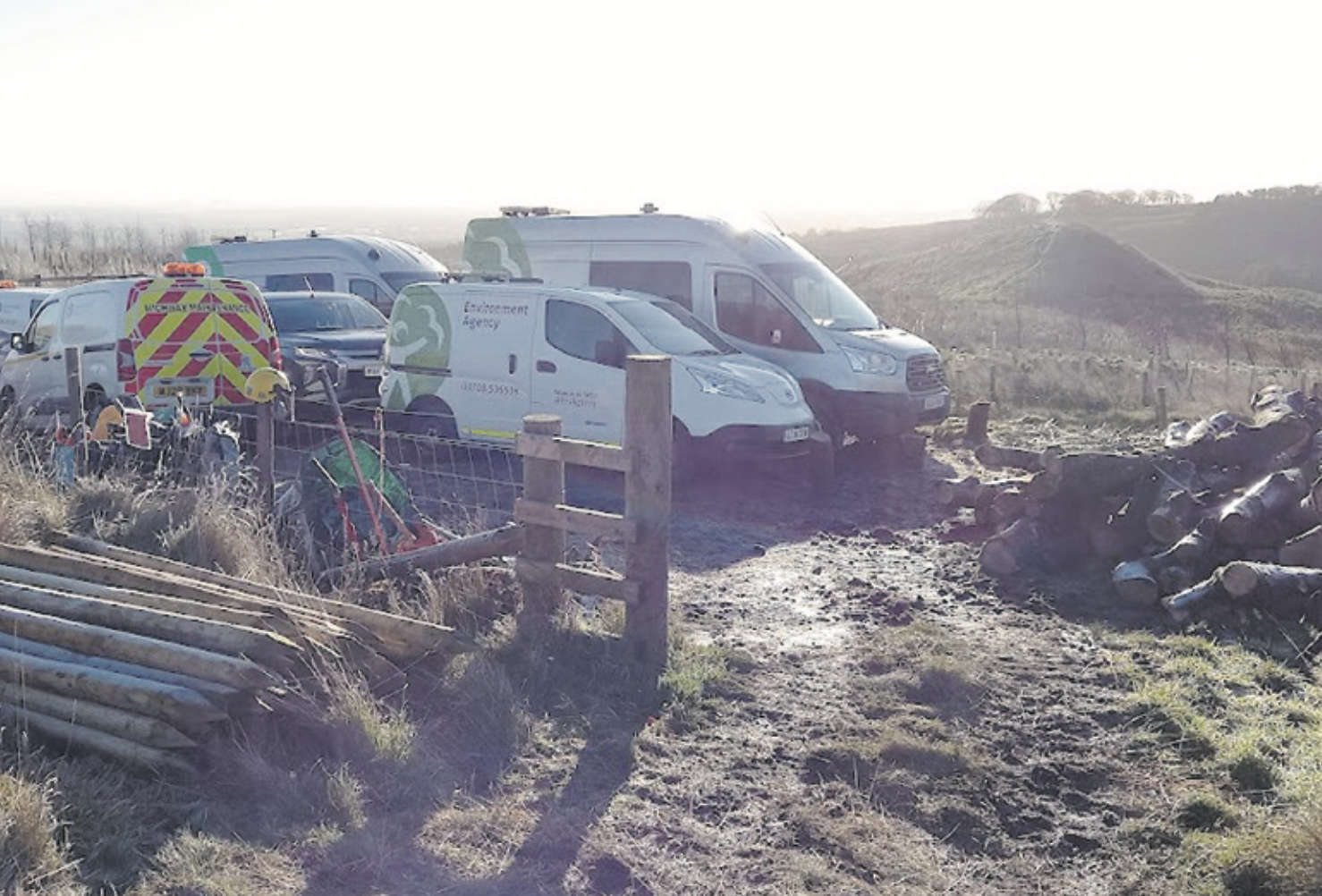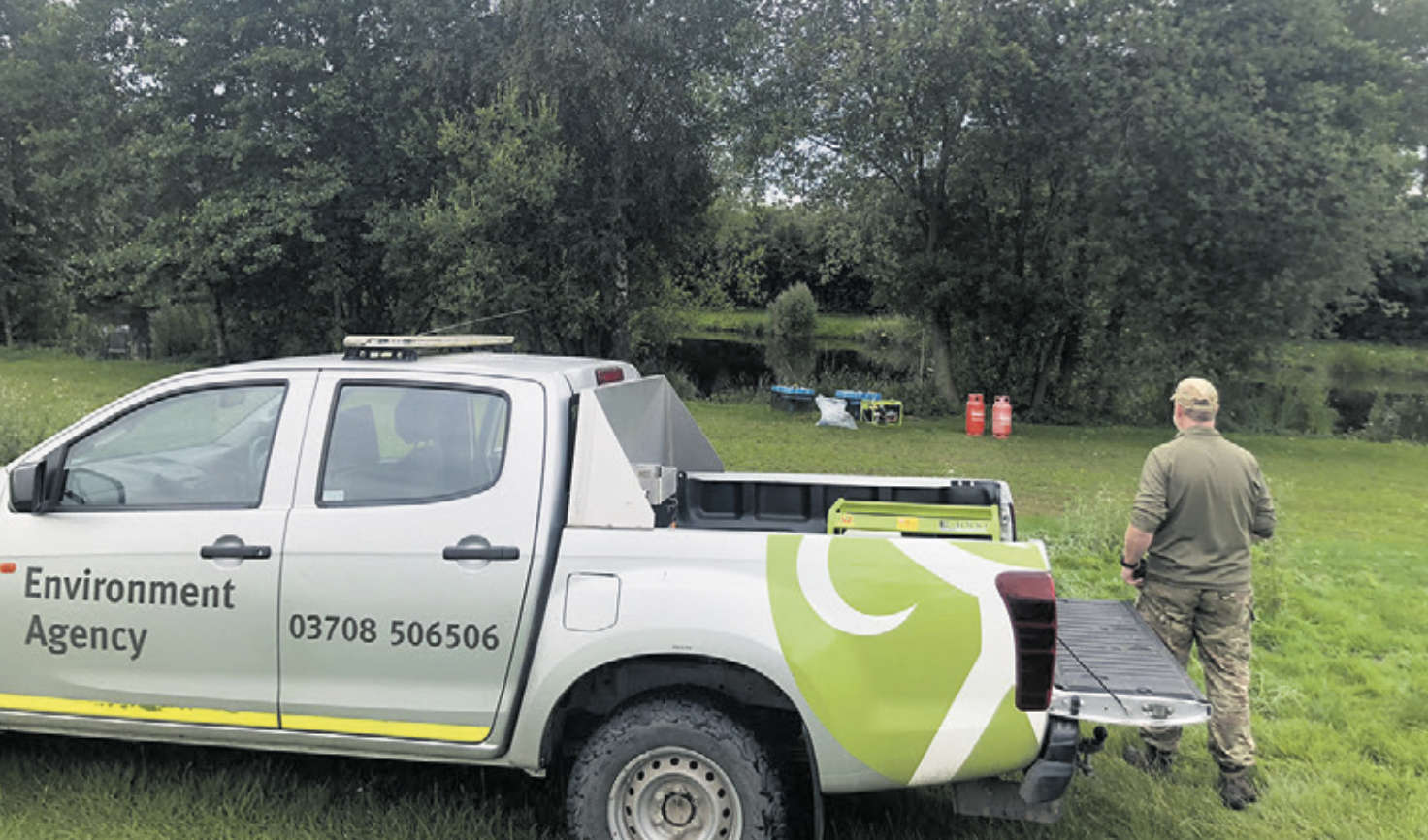 TIMBER REUSE – Log barriers and tree planting can be used to help reduce flooding.
TIMBER REUSE – Log barriers and tree planting can be used to help reduce flooding.
Lesley Worswick, Environment Agency Area Director, writes her latest column. She looks back at a turbulent year of achievements and challenges and forward to 2022.
The end of the year is almost upon us and as 2022 rolls around, I have found myself reflecting on the last 12 months and the hurdles we have all had to overcome.
It has been a record-breaking year of events, much like 2020. The year began with a bang when Storm Christoph swept through the North West from January 18-21.
In those three short days, levels of water in the River Mersey broke records. In Didsbury at the vast flood storage reservoir, which is capable of holding up to 310 Olympic size swimming pools of water, the distance between safety and a threat to people’s lives was a matter of centimetres. The defenses held strong and protected more than 3,000 properties.
Throughout the incident, our teams and our partners, in the police and fire services, local authorities and utility companies to name but a few, took a ‘think big, act early approach’ meaning we were able to protect more than 24,000 properties and businesses through a combination of operating defences and assets.
We were also able to warn more than 6,000 people in advance of Christoph’s arrival through our flood warning service.
Our changing climate means we are going to experience more of the types of storms we have seen this year. While hard defenses are important, we must also consider what nature has already provided us to combat it.
I love seeing nature-based solutions being used to reduce flood risk (alongside all the other environmental benefits they can bring) and working for the Environment Agency, I’m surrounded by others who feel the same. We are working with our partners Moors for the Future and The Mersey Forrest to ensure that nature is left in a better condition than it was when we found.
This includes the use of leftover materials to increase flood protection in Greater Manchester.
A good example this year was timber trunks collected during construction of the £56m Rochdale and Littleborough and £40m Radcliffe and Redvales flood schemes going to Smithills in Bolton. Here, log barriers and tree planting help to store water in upland areas in order to reduce flood risk for communities downstream.
Recent studies have shown that slowing the flow of water on the Smithills Estate, through measures such as leaky barriers, can reduce flood risk by up to 27 per cent.
Reusing timber from flood-scheme construction will help to create at least four more leaky barriers.
Our dedicated teams dealt with floods but it wasn’t the only problem we faced this year. Our dedicated teams have faced many challenges, including dry weather, pollution, and environmental incidents such as fish deaths.
More than 76,000 incidents were reported to the Environment Agency’s national incident management service. One every seven minutes, 24 hour a day.
This number can seem overwhelming, but there have been some environmental success stories in the last 12 months.

FISH RESTOCKING: All fish are reared at the Agency’s fish farm.
We hit our target of better protecting 300,000 homes on time and on budget, began the new £5.2bn flood programme, and put the National Strategy for Flood and Coastal Erosion Risk Management into action.
This means we are now on track to start better protecting 336,000 properties, including homes, businesses, schools and hospitals across England by 2027 with more than £42m invested in over 50 schemes across Greater Manchester, Mersey and Cheshire in the first year of the new programme.
We have been breathing life back into our blue and green spaces with projects such as the Natural Course Bringing the River Irk to Life (BRIL) scheme and Mayfield, that are helping to transform our rivers into thriving waterways that will bring people and nature together.
The Mayfield Project is especially exciting. Phase One of this significant project involves the creation of a new inner-city river parkland delivering notable improvement across a 365 metre stretch of the River Medlock as part of the £1.4bn scheme.
Plans for the development include the creation of a 6.5 acre new inner city parkland surrounding part of the River Medlock, a heavily adapted river targeted for improvement by the EA. Once completed, it will deliver 11 acres of public space and the creation of a new wetlands area delivering better opportunities for nature and allowing the river to return to a more natural state.
Design work and modeling of the parkland have also been done to ensure that the altered landscape can be used for flood water mitigation.
These solutions will reduce flood risks and increase Manchester’s climate change adaptation efforts.
The Mayfield Project is a prime example how we collaborate with a developer to achieve our goal to make society cleaner and more resilient. We welcome the chance to meet other developers to discuss how we can help them to achieve their environmental goals.
Our fisheries team has also been hard at work pro-actively targeting anyone who feels they can get away fishing illegally.
We delivered our annual coarse fish closed season campaign in the spring to remind anglers not to fish on rivers, safeguarding spawning coarse fish – vital in protecting the future of our fisheries.
In the summer, patrols were undertaken by our officers as part of a month-long enforcement campaign to crack down on illegal fishing and poaching.
Operation LUNGFISH launched the campaign on July 23rd, and ran until August 31st. The campaign had two objectives: to detect licence evasion, illegal fishing, and the use of unauthorised traps.
Over the course of this period, 4,500 licences were checked by officers in all 50 states. These officers also saw drones and special surveillance equipment used for detecting illegal activity on waterways. The campaign had high detection rates, with 839 offences notices issued for fishing-related offences.
We have also been helping our local fish populations across Greater Manchester ‘keep on swimming’ with almost 28,000 fish released into Greater Manchester, Merseyside and Cheshire waters throughout December.
A further 3,000 coarse fish including chub and dace will be released into the River Tame in the New Year.
Releasing fish into our rivers is one of the many things we do to develop and enhance fisheries and encourage restoration. All the fish are reared at the Environment Agency’s national fish farm near Calverton, Nottinghamshire, using funding from rod licence sales.
Without mentioning illegal waste, no end of the year round-up is complete.
Our Enforcement Team has successfully prosecuted several individuals in 2021 this year. They work round the clock to crackdown on waste crime.
The fact remains that we will not tolerate waste crime and I think it speaks volumes that our Enforce- ment Team have used 2021 to demonstrate, without a shadow of a doubt, that we are still working actively and effectively against those who think they have the right to pollute our environment.
It’s no coincidence that at the end of another year, many of us will be reflecting back and gaining new per- spective, much like the protagonist in that classic film It’s a Wonderful Life.
It can help us appreciate our environment more than we take it for granted every day.
We have quite the job ahead of us if we are to leave our wonderful world in a better state than when we found it, but I have hope. Hope is the belief that I can accomplish something.
I will be looking for sustainable solutions this Christmas. These include recyclable wrapping paper, reusable decorations (including homemade) and eco-friendly cards. These small changes will make Christmas more sustainable and less expensive.
Until next time, I would like to wish you all a safe and very merry Christmas and a happy and positive New Year.



